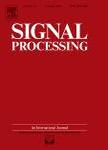版权所有:内蒙古大学图书馆 技术提供:维普资讯• 智图
内蒙古自治区呼和浩特市赛罕区大学西街235号 邮编: 010021

作者机构:Northwestern Polytech Univ Sch Marine Sci & Technol Xian Peoples R China Northwestern Polytech Univ Shenzhen Res & Dev Inst Shenzhen Peoples R China Univ Quebec Quebec City PQ Canada
出 版 物:《SIGNAL PROCESSING》 (Signal Process)
年 卷 期:2025年第232卷
核心收录:
基 金:National Key R&D Program of China [2024YFF0505502] Shenzhen Science and Technology Program [JCYJ20230807145600001] National Natural Science Foundation of China TCL science and technology innovation fund
主 题:Acoustic echo cancellation Convolutive transfer function Kronecker decomposition RLS algorithm
摘 要:The recursive least-squares (RLS) algorithm is a promising algorithm in acoustic echo cancellation (AEC) thanks to its fast convergence rate and competitive performance. However, its complexity is rather high, particularly when the system operates in acoustic environments with long acoustic impulse responses. This paper deals with the problem of AEC in a multiple-input and single-output (MISO) audio system, which consists of multiple loudspeakers and a microphone at the receiving room. A method is developed in the short-time-Fourier-transform (STFT) domain, which operates on a subband basis. In every STFT subband, the convolutive-transfer-function (CTF) model is adopted, so the echo path is modeled with a finite impulse response (FIR) filter. A two-layer decomposition (TLD) of the filter matrix is then applied and an RLS-type of algorithm is subsequently deduced to achieve channel identification and echo cancellation. This algorithm is able to achieve echo cancellation performance comparable to RLS algorithm with significantly lower complexity.